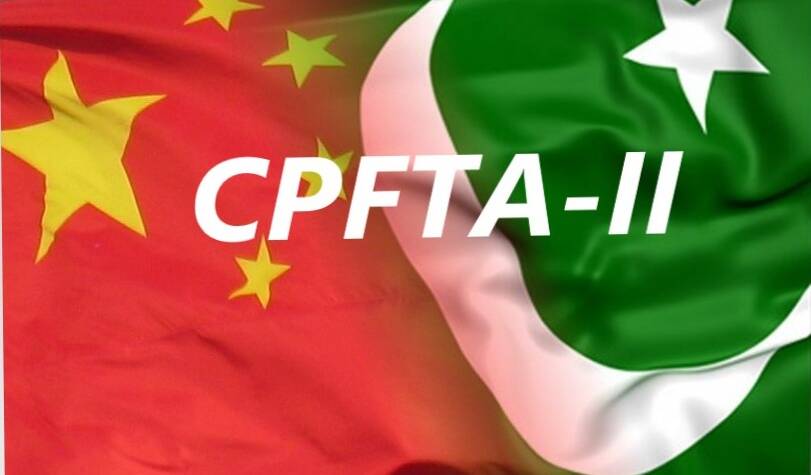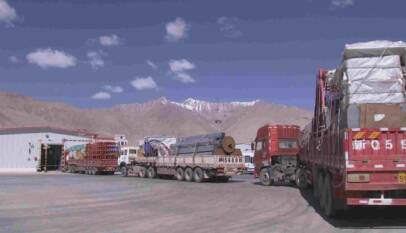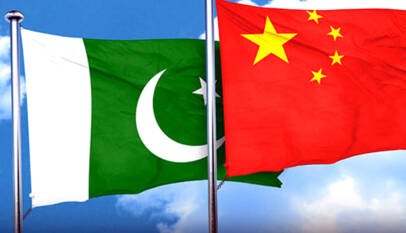China-Pakistan trade under renewed Free Trade Agreement to come into effect today
China and Pakistan mutual trade under the Second Phase of the China-Pakistan Free Trade Agreement (CPFTA) will begin today. The trade concessions China offered to Pakistan include immediate tariff elimination on 313 priority tariff lines which are going to boost Pakistan’s exports by $4-6 billion in the forthcoming five years. Pakistan is the major benefactor under the renewed CPFTA, Pakistan took safeguard measures (SGMs) and added 1760 tariff lines into the protected list. These protected items will help the country preserve its local industry. Second phase CPFTA was signed in Beijing on April 28, 2019.
The prominent salient feature of the FTA is the safe guard measures (SGMs) under which Pakistan will be able to restrict the import from China if it deems that its industry is going to injure with the import of that particular items. SGMs can be applied for three years, and can be extended to an additional two years. This has not been granted to any other country by China.
“The FBR has issued the notification heralding the implementation of FTA-II under which the trade between the two countries will begin from today,” a senior official of Commerce Ministry told The News. “Under short-term basis, Pakistan will increase its exports by $500-600 million,” he said.
The official said China has extended zero duty to Pakistan on 313 tariff lines which will help Pakistan exports increase and to capitalise the potential to increase exports, Pakistan decision makers require ensuring export surplus.
Though the government is trying to allure Chinese companies to relocate to Pakistan’s Special Economic Zones, but the required pace is not visible, as the Chinese companies only want to plug and start playing but the government is not responding up to the mark.
Pakistan and China inked the FTA-II in Beijing on April 28, 2019 and under the new FTA Pakistan has secured enhanced and deeper concessions on products of its export interests, revision of safeguards mechanism for protection of the domestic industry, inclusion of the balance of payment clause as a safety valve against balance of payments difficulties, and effective enforcement of the electronic data exchange.
About the market access, the official said that under the Phase-II of China Pakistan Free Trade Agreement,both countries will liberalise 75 percent of tariff lines for each other in a period of 10 years by China and 15 years by Pakistan.
China will immediately eliminate tariffs on 313 most priority tariff lines of Pakistan’s export interest. Overall, China has granted concessions to products which include textiles and garments, seafood, meat and other animal products, prepared foods, leather, chemicals, plastics, oil seeds, footwear as well as engineering goods including tractors, auto parts, home appliances, machineries, etc.
Pakistan has offered market access to China on raw materials, intermediate goods and machineries. Access to cheaper imported inputs and machinery will improve Pakistan’s export competitiveness and help upgrade its industrial production. About Protected Tariff Lines, he said that 25 percent of tariff lines i.e., 1760 TLs have been placed in the protected list. The major protected industries include: textiles and clothing, iron and steel, auto, electrical equipment, agriculture, chemicals, plastics, rubber, paper and paper board, ceramics, glass and glassware, surgical instruments, footwear, leather, wood, articles of stones and plaster, and miscellaneous goods.
Mentioning SGMs, he said that these are invoked to temporarily restrict imports of a product which cause injury or threaten to cause injury to the domestic industry. The existing SGM, in CPFTA were inadequate to address the concerns of the industry and have lapsed since these could only be invoked during the transition period i.e. 2007-12. He said that some modifications have been incorporated in the agreement that include a) In Phase-I SGM were limited to the absolute increase in imports, but now can be invoked on relative increase in imports as well, b) The transition period has been increased to 10 years for CAT-I and 8 years for the remaining tracks, which in relation to Tariff Reduction Modality will be 15 years for CAT-II & 23 years for CAT-III. C) SGMs can be applied for three years, and can be extended to an additional two years. This has not been granted to any other country by China. d) In Phase-I SGM, injury to the industry had to be proven but an emergency measure of 180 days can be imposed in Phase-II without proving injury. With regard to balance of payment, provision has been introduced in the agreement as such measures can help to forestall the imminent threat of a serious decline in monetary reserves. “In order to avoid mis-declaration and under-invoicing of imports from China, a system of Electronic Data Exchange has been enforced on trade taking place under the framework of Free Trade Agreement,” he said.
Sahiwal power plant hosts grand Eid Festival to strengthen workplace unity
ISLAMABAD, Apr 02 (APP): The 1320 MW Sahiwal Coal-Fired Power Plant recently hosted a gran…











